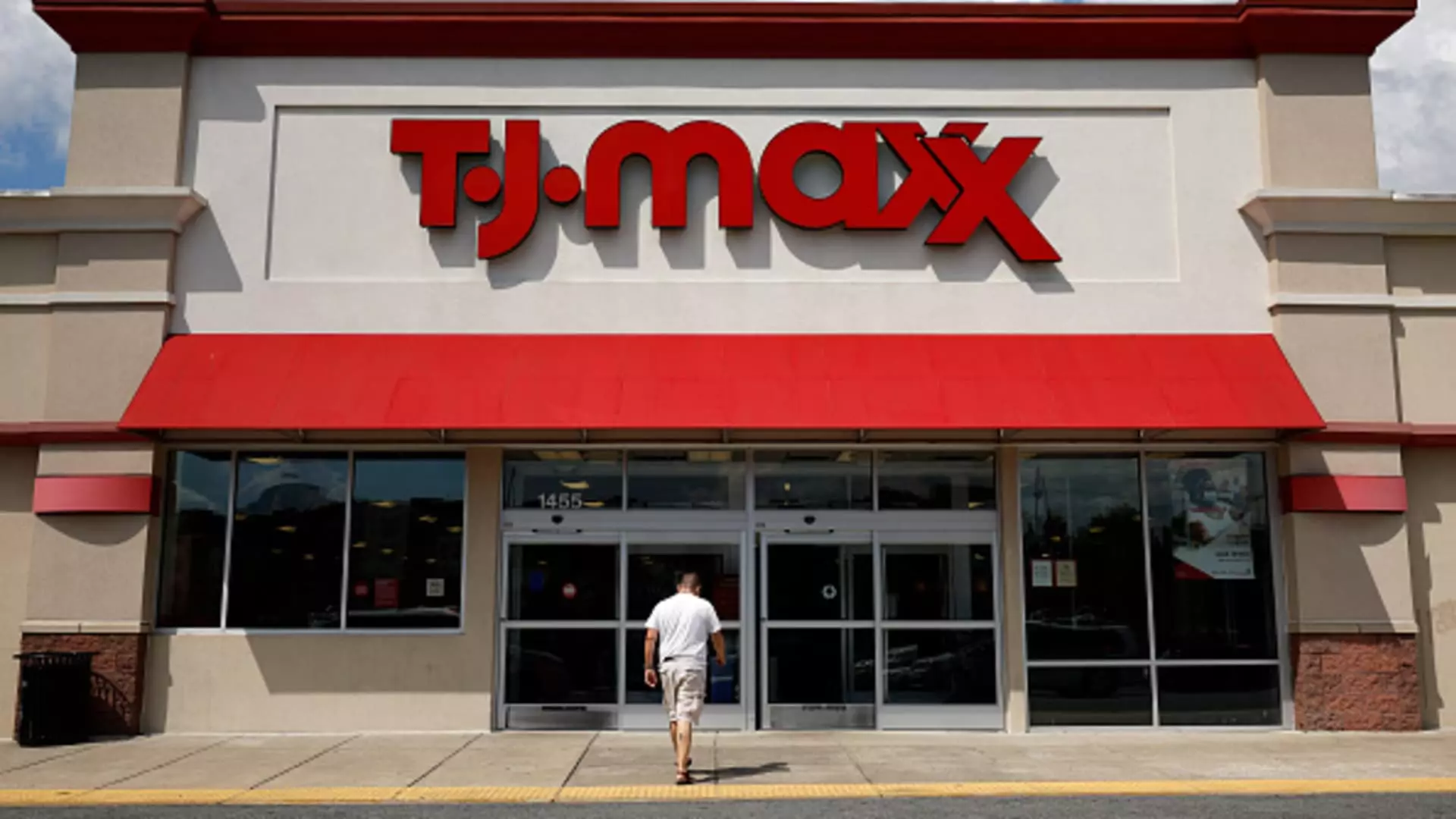Amidst the dazzling headlines about TJX Companies surpassing Wall Street expectations, a more critical eye reveals a complex reality far from the optimistic veneer. The company’s recent financial reports paint a picture of resilience, yet beneath the surface lies a fragile optimism rooted in strategic assumptions that could falter if economic conditions shift unfavorably. While CEO Ernie Herrman confidently proclaims that strong sales and increased guidance demonstrate the company’s robustness, this narrative largely overlooks the underlying vulnerabilities that could jeopardize long-term stability.
The seemingly impressive second-quarter earnings—surpassing analyst forecasts—are not as straightforward as they appear. The supposed “beat” is partly attributable to a series of assumptions about the persistence of tariffs and consumer demand that may not hold in the coming months. The company’s expectation of maintaining current tariff rates and the reliance on discounting strategies that are based on short-term market conditions gloss over the increasing risks posed by geopolitical tensions, inflationary pressures, and evolving consumer behaviors. How sustainable is this growth if tariffs are renegotiated or lifted? It’s a question seldom addressed frankly in corporate earnings reports but critical for a comprehensive understanding.
Overconfidence in a Threatening Environment
TJX’s optimistic forecasts and raised guidance suggest an unwavering belief that its business model is resilient enough to weather external shocks. Yet, this confidence borders on hubris. The firm’s strategy hinges heavily on purchasing excess merchandise at a discounted rate—an approach that, while advantageous in a stable environment, becomes precarious in times of economic uncertainty. If tariffs intensify or consumer spending wanes, the discounting model could backfire, leading to slimmer margins and inventory gluts.
Furthermore, TJX’s assertion that its off-price model will continue to prosper at the expense of traditional department stores seems overly optimistic. Competitive pressures are mounting, and the retail landscape is more volatile than ever. Consumer preferences are shifting rapidly, and the reliance on robust foot traffic and impulsive purchasing may falter if economic instability triggers cautious spending. The company’s projections rest heavily on the assumption that demand remains strong, yet history suggests that during downturns, even the most resilient retailers can face steep declines.
The Illusion of Market Leadership
Much is made of TJX’s ability to quietly gain market share from traditional retailers, thanks to its ability to acquire goods post-importation. However, this advantage could diminish if tariffs become a more significant burden or if supply chains face disruptions. Relying on a purchasing window after goods have cleared customs delays or tariffs could become less advantageous in a more adversarial trade environment. Moreover, the narrative that TJX can “sidestep” the cost of tariffs by purchasing surplus merchandise fails to account for longer-term strategic shifts—such as reshoring or tariffs that push prices upward across the board.
The recent surge in TJX shares, driven partly by investor optimism amid record profits, might foster complacency within the company’s leadership. The assumption that consumer demand will continue unabated—particularly as inflation erodes consumer purchasing power—is dangerously optimistic. There’s a fine line between confidence and overconfidence, and TJX’s current tone appears to lean dangerously towards the latter.
A Critical Reflection on Consumer Realities
In analyzing these results, it’s essential to question whether the so-called strength of off-price retailers is as resilient as portrayed. While the brand rhetoric highlights healthy transaction numbers and increased sales, the broader economic context—rising inflation, stagnant wages, and economic uncertainty—casts doubt on the durability of this growth. The core assumption that consumers will continue to flock to discount outlets overlooks the reality that disposable income is shrinking for many middle- and working-class families.
Furthermore, the reliance on a “strong second quarter” to justify upgraded guidance could obscure potential cracks in the foundation. As consumers tighten their budgets, the ability of TJX to sustain its growth trajectory depends heavily on its continued attractiveness and access to discounted inventory—conditions that are increasingly uncertain given the worldwide economic pressures and rising geopolitical tensions. To blindly trust in the company’s capacity to avoid future blowbacks would be naïve.
Final Thoughts: Questioning the Bubble
The buoyant outlook surrounding TJX’s recent financial performance invites skepticism rather than uncritical celebration. While the company demonstrates adaptability and strong market positioning, the assumptions underpinning its optimistic guidance are fragile amidst a turbulent macroeconomic landscape. The belief that the current trade and consumer environment will persist as favorable is, at best, overly optimistic. At worst, it dangerously overlooks the vulnerabilities that could lead to downturns much sharper than the company’s current forecasts suggest. Until there is transparent acknowledgment of these risks, investor confidence remains as much a gamble as the retail sector’s future itself.

